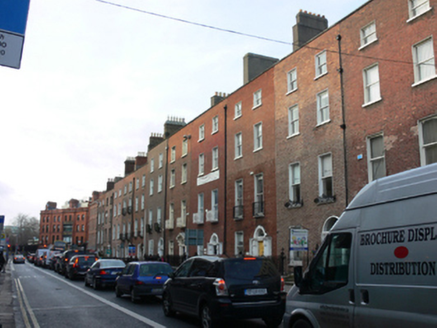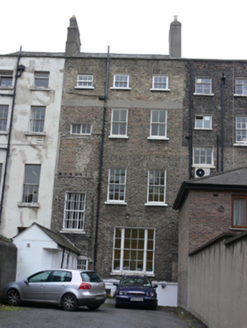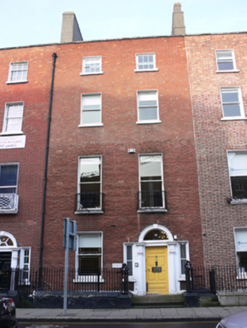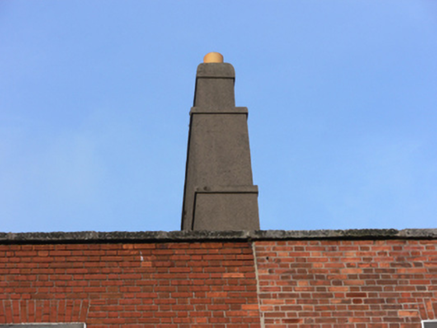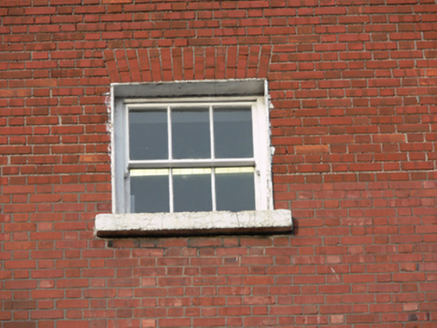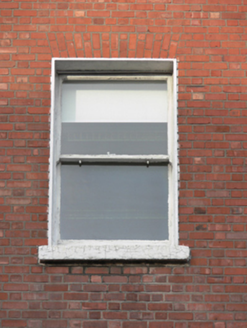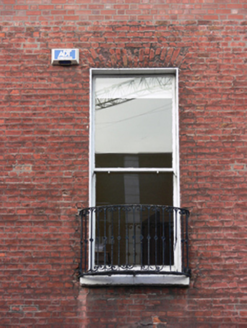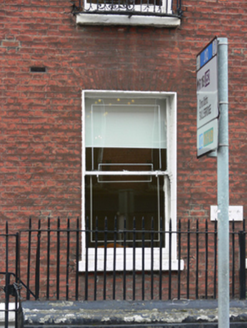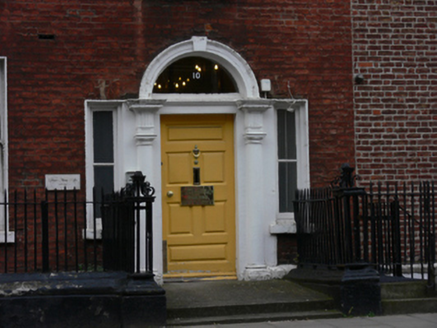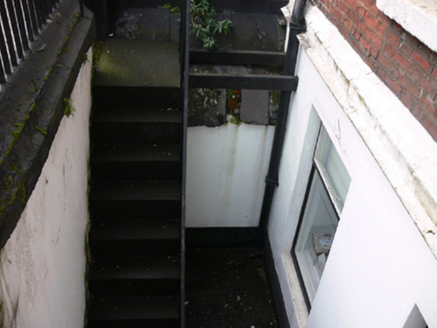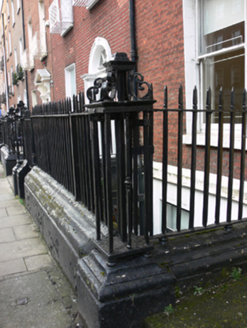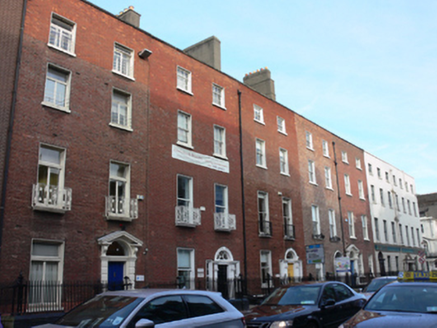Survey Data
Reg No
50020461
Rating
Regional
Categories of Special Interest
Architectural, Artistic, Historical, Social
Original Use
House
In Use As
Office
Date
1760 - 1780
Coordinates
316524, 233767
Date Recorded
24/03/2015
Date Updated
--/--/--
Description
Terraced two-bay four-storey former house over basement, built c.1770, having single-storey return to rear (north-east) elevation. Now in use as offices. M-profile pitched slate roof concealed behind repointed red brick parapet with granite coping, rendered chimneystacks. Red brick, laid in Flemish bond, to wall to front (south-west) elevation, refaced to upper floors, masonry plinth course over smooth rendered wall to basement, brown brick, laid in English garden wall bond, to rear. Square-headed window openings with raised render reveals, masonry sills, wrought-iron curved balconettes to first floor, and with three-over-six pane and one-over-one pane timber sliding sash windows. Some two-over-two pane timber sliding sash windows, replacement timber framed casement window, and Wyatt window, to rear. Round-headed door opening, with moulded masonry surround having keystone detail, Doric-style columns with fluted console brackets, moulded cornice, plain fanlight, and timber panelled door, flanked by square-headed side lights having masonry sills and timber framed windows. Wrought-iron railings with square-profile open work piers and matching gate on masonry plinth wall. Set slightly back from Clare Street.
Appraisal
Clare Street was developed c.1762 by John Ensor for the sixth Viscount Fitzwilliam. This well executed Georgian terraced town house retains, Casey (2005), its original internal plan form. The restrained tripartite doorcase adds elegance to the composition, while the timber sash windows add to the historic character of both building and streetscape. Cast-iron is used to good effect, with the decorative balconettes and railings adding decorative interest to the façade. The house was occupied 1850 by Edward Tickell, Queen’s Counsel, who owed his position to lobbying by the 3rd Duke of Leinster. Scale’s map of 1773 shows a stable lane to the rear.
